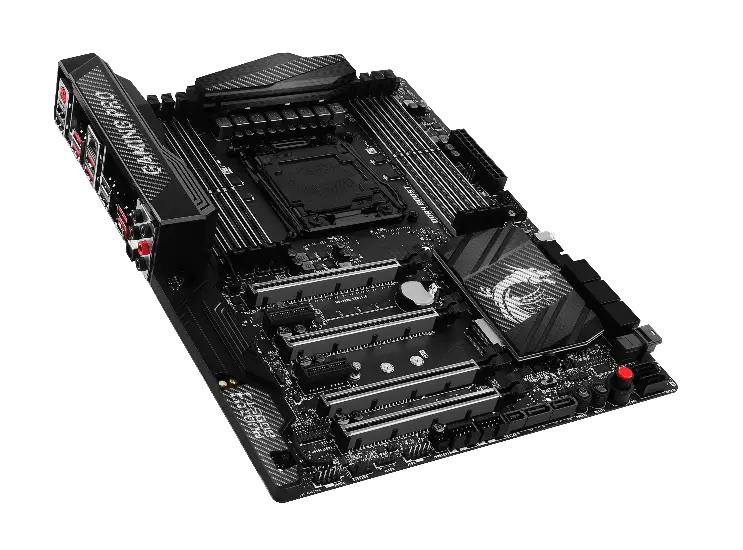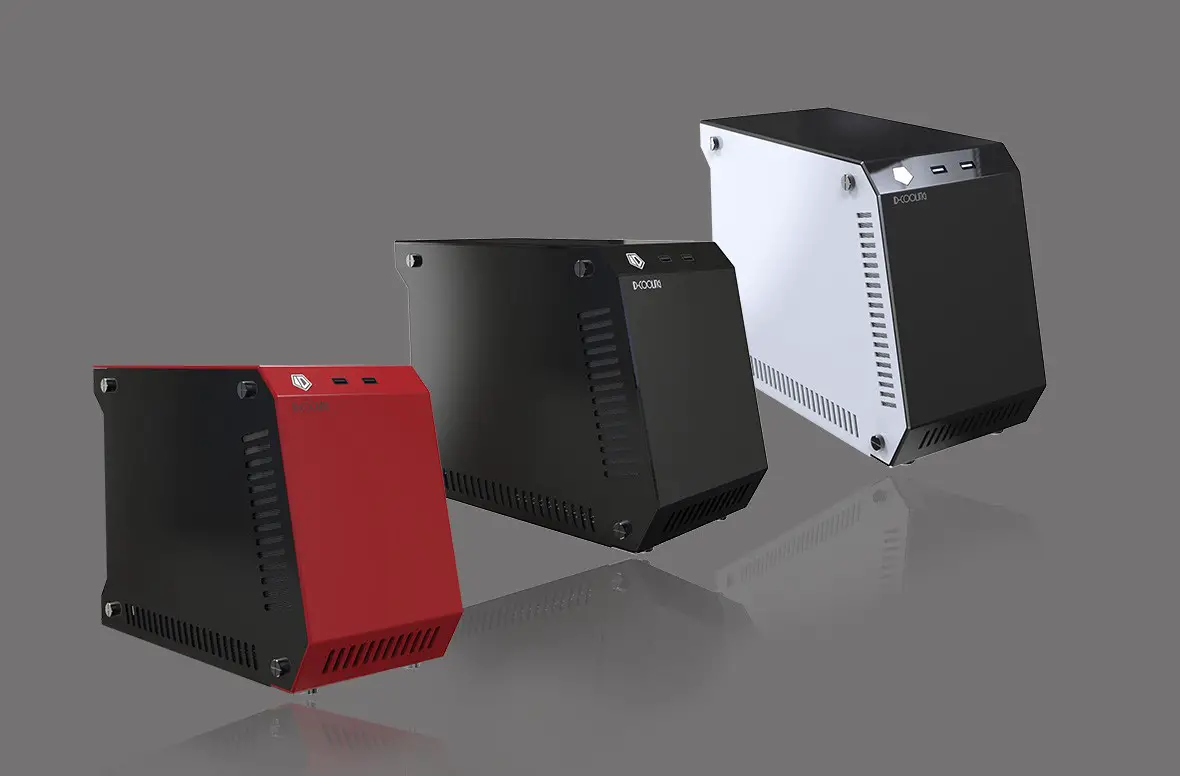![]()
Like many recently released Silicon Power models, the Armor A66 comes housed inside a rather decent shipping container. The combination of a (relatively) massive full color image of the A66 with clear and precise details listed on the front in large font means that this white box will first standout for its aggressive conservatism amongst a sea of garish shipping containers and then continue standout for being highly informative without wasting any of your time. Put simply a quick glance lets you know what the A66 is, and then another quick scan of the front will tell you exactly what it has to offer. No fuss. No muss. No time-wasting slogans or blurbs. Just pure information in multiple formats. Just the way it should be.
![]()
Internally Silicon Power has gone for the tried-and-true half clamshell approach to protecting the A66 while in transit. While not the absolute best, as it provides no protection to the front, the multiple crumple zones combined with reasonably thick carboard exterior is more than enough to shrug off all but the most determined of attacks by Mister Murphy. Mix in the fact that the Armor A66 comes… armored and quite honestly as long as the shipping agent’s truck doesn’t run over your parcel while in-transit you can pretty much take it to the bank that your shiny new purchase is going to arrive safe and sound. (Also) Just the way it should be.
![]()
It is obvious that Silicon Power’s external storage design team are fans of LaCie. We say that as Silicon Power external devices fall into two categories: funky, stylistic models that are relatively reasonably priced but fairly fast… and funky stylistic models that can be thrown against a wall and shrug it off. Whereas, LaCie made their bones by offering two things to customers: funky stylistic devices that are expensive as they were fast (for their market niche), and… funky looking portable devices that could be bounced off a wall and shrug it off.
![]()
Furthermore, the Silicon Power Armor A66 pays more than just a wee bit of… ‘homage’ to LaCie’s Rugged line. Just like the LaCie Rugged Mini series, the Armor A66 uses a combination of hard and soft material to shrug off both sharp penetrative damage and blunt force trauma. Unlike the LaCie, the Armor A66 does not use aluminum for its hard-shell protection. It used thermomoulded plastic. While the prices of aluminum are skyhigh right now… a couple ounces of metal is not worth nearly doubling the asking price. Especially when the combination of (admittedly inferior) black (plastic) with yellow rubber simply looks better than silver with orange rubber.
![]()
Also unlike the LaCie (which did play with the idea for a while before removing it from the their design), the Silicon Power Armor A66 comes with an integrated USB cord carrier. One that allows you to wrap the cord around 3 sides of the A66 and lock it in place…ish. In testing not once did the cord come free. However, when dropped on either long narrow side the USB headers on said cord did take the brunt of the damage. Enough that one cable header’s plastic did break.
![]()
This is because while the majority of the cable is nicely encased in rubber the headers are not. They just… sit there not even hugging the case. As such they can be damaged if the drive falls and hits a rock/corner of your desk/etc juuuust right. This is unfortunate and rather puzzling. A little bit of more molding to the rubber exterior would have allowed the headers to be similarly protected from both trauma and water. Hopefully the successor to the A66 comes with two little USB header ‘pockets’ that allow owners the luxury of tucking in both ends of the cable.
Speaking of water damage the A66 comes with an IPx4 rating. What this means it is not certified against dust intrusion but rain and similar levels of ‘splashing’ water will be shrugged off. If you want to cheaply and easily improve this all you need do is trace a bead of silicon along the edge of the plastic portion. Do this on both sides and you will fill this gap up… and nicely improve its actual dust and water rating.
![]()
This will leave the A66’s USB port as the only place dust and/or water can enter. As Silicon Power already include a nicely fitted plug (that is part of the rubber mold) there is little you can do to improve things here. Though once again a bead of silicon around the four sides of the port can certainly not hurt. Either way, the Type-A port is the weakest link in Silicon Power’s Armor lineup. Seagate, LaCie, Western Digital… none use this size of port. Few use a Type-A because not only is bigger than a more optimal Type-C port, finding replacement Type-A to Type-A cables is not as easy as going to your local Walmart and picking one up. If Silicon Power wants to be a true competitor to LaCie they need to fix this and fix it now.
![]()
Also different, but not necessarily in a bad nor a good way, is the actual configuration of the soft and hard combination. With LaCie, the rubber portion is most accurately described as a rubber bumper sleeve that covers the 2.5-inch metal form-factor’ed portable device. What this means is you can easily remove the rubber ‘bumper’ and still safely use the LaCie Rugged Mini. With the Armor A66, the rubber is a fully integrated component of the Armor A66 design. This is both a good thing and a bad. It is a good as there is much, much more rubber to absorb shock and blunt force trauma compared to the LaCie Rugged. It is bad… as once the hard plastic is cracked or the soft rubber torn the device is basically toast. Yes, your data should still be fine, but with the internals open to the elements you will want to replace the A66 as soon as possible.
![]()
So, to tear down the A66 the first thing you have to do is remove the four screws holding the ‘top’ plastic portion to the rest of the assembly. For all intents and purposes, you can consider this a plastic lid that simply covers the rest of the A66.
![]()
Once that is done gently peel the rubber portion off the plastic internal/external assembly. Be careful, there is a large rubber ‘wing’ under each side. These wings act as further shock absorbers to further cushion blows.
![]()
The back plastic portion is attached the internal hard drive via a moderately sized cushion with double sided tape. So if you really, really want to full tear down the A66 peel it off and you are nearly done. All that is left is to separate the rubber from the hard drive via… lifting it out of the rubber cradle.
![]()
Taking a closer look, you can see that the small PCB attached to the HDD is just held in place via friction. We typically dislike this as in most devices that means that vibrations can cause the two parts to separate enough to cause random data and/or power loss. In the A66’s case however, the rubber external enclosure simply does not offer enough room for this to happen. So, while still a touch sub-optimal… it is not a deal-breaker either. If you want to improve upon things, a narrow strip of electrical tape across the bottom of the SATA headers and PCB headers will further make separation of the two parts more unlikely.
![]()
In a move that should surprise no-one, given the low asking price, Silicon Power has once again opted for the tried and true (if old and slow) ASMedia ASM1153 SATA to USB hub IC. Given the fact that the hard drive is also an older and slower 5,400RPM(ish) Seagate Mobile HDD series… the controller is not going to be the weak link in the A66’s mediocre performance. It is going to be the Mobile HDD drive they have opted for. To be fair by 5,400RPM 2.5-inch hard drive standards this drive is a decent performer. Decent enough LaCie also use it in their Rugged Mini series. It just is that all 5,400rpm drives are slow. As such it is no worse than what someone who spent nearly twice as much on their new portable drive will get… but it could have been better.
![]()
If this bugs you as much as it does us, buy the smallest capacity version available. Then buy a Seagate BarraCuda Pro in the capacity you want (or a SSD)… and consider the A66 to be a moderately priced (about $40 for the 1TB variant) external storage enclosure that just happens to come with a ‘free’ hard drive. You will end up with a noticeably peppier product. One that should have come from the factory like it. Hopefully we will see a ‘Pro’ version at some point so as to both save your warranty and money.
Overall, the Silicon Power Armor A66 gets a lot, and we mean a lot, right. Yes, there is room for improvement but compared to its predecessor and the main competition it is an excellent upgrade. One that provides excellent shock protection in all 3 axis and does so without breaking the bank. Now on to the ‘performance’ it has to offer.









